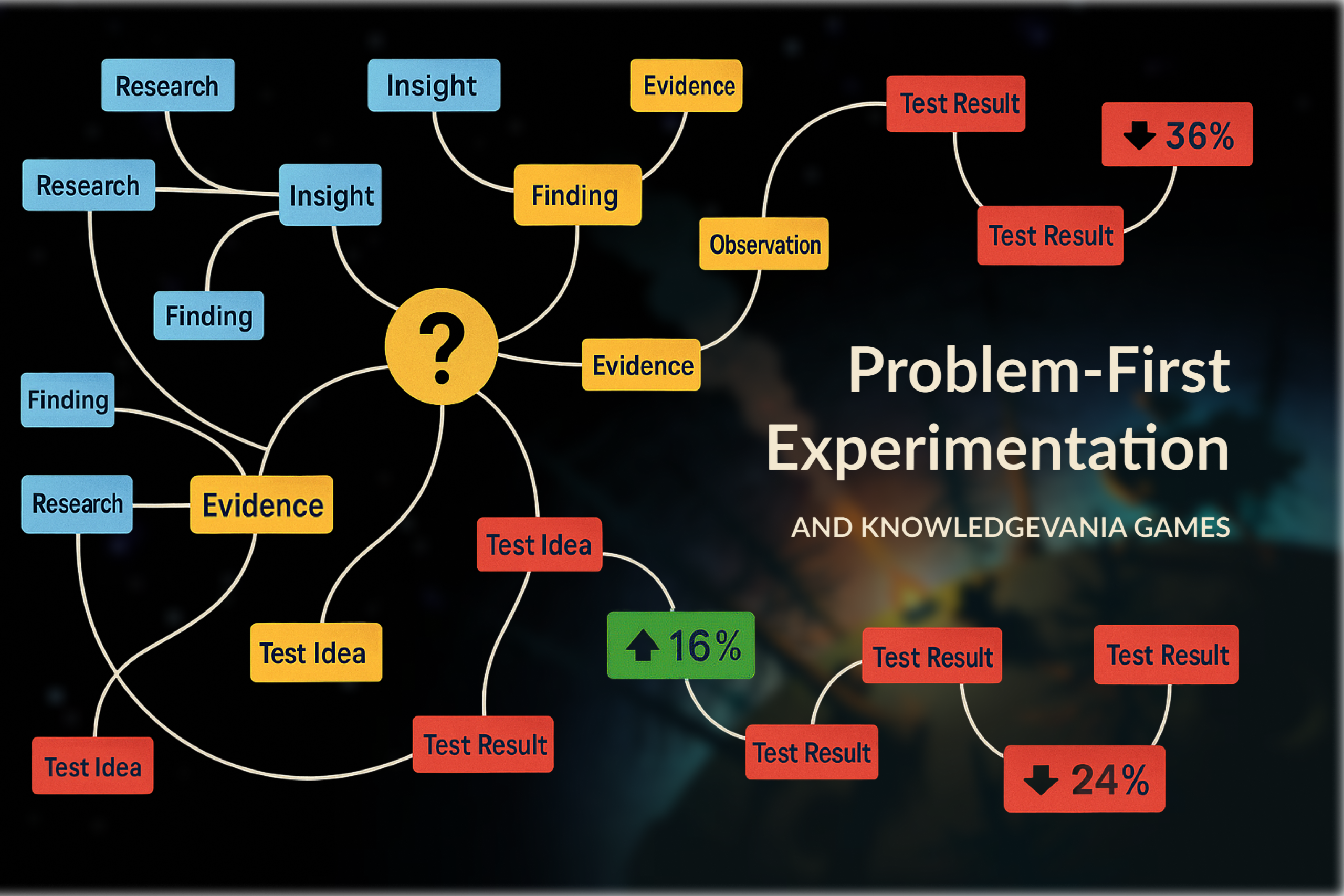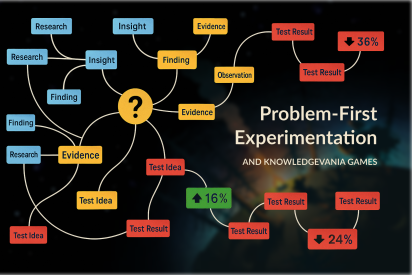
From Guesswork to Deduction
Too many experimentation programmes run like slot machines: pull a lever and hope for a payout. When win rates stay low, confidence dips, but the issue isn’t A/B testing; it’s solution-first thinking.
A problem-first approach creates a system that turns evidence into action, and action into results.
We also have a separate article that explores our problem-first approach in more detail. You can read it here.
Look to “knowledgevania” or knowledge-based games for inspiration, such as Outer Wilds, Shadows of Doubt, and Her Story. There, progress isn’t gated by levelling up or unlocking new tools, but from what you learn and how you connect the dots.
Adopt the same mindset: treat knowledge as the currency of progress.
Three Ideas to Borrow from Knowledge-based Games
Outer Wilds: The Ship Log (Rumor Map)
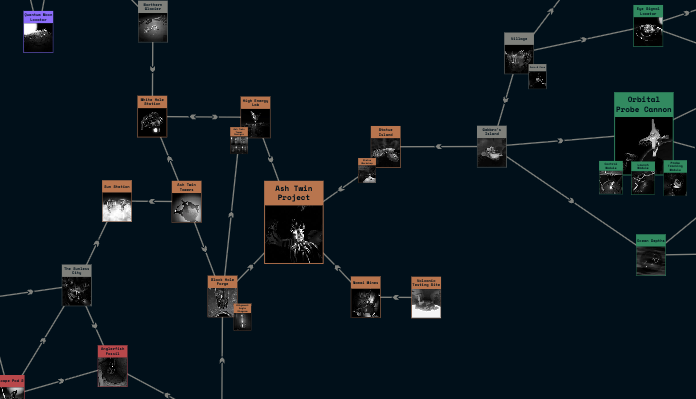
In Outer Wilds (a game about a solar system caught in a time loop), every discovery becomes a node in your Ship Log; connections appear only when you’ve uncovered a relationship.
Inspired by this, we can build a living evidence map where problems are nodes. If there’s no evidence-backed connection between a problem and a solution, it doesn’t ship yet.
Shadows of Doubt: The Case Board
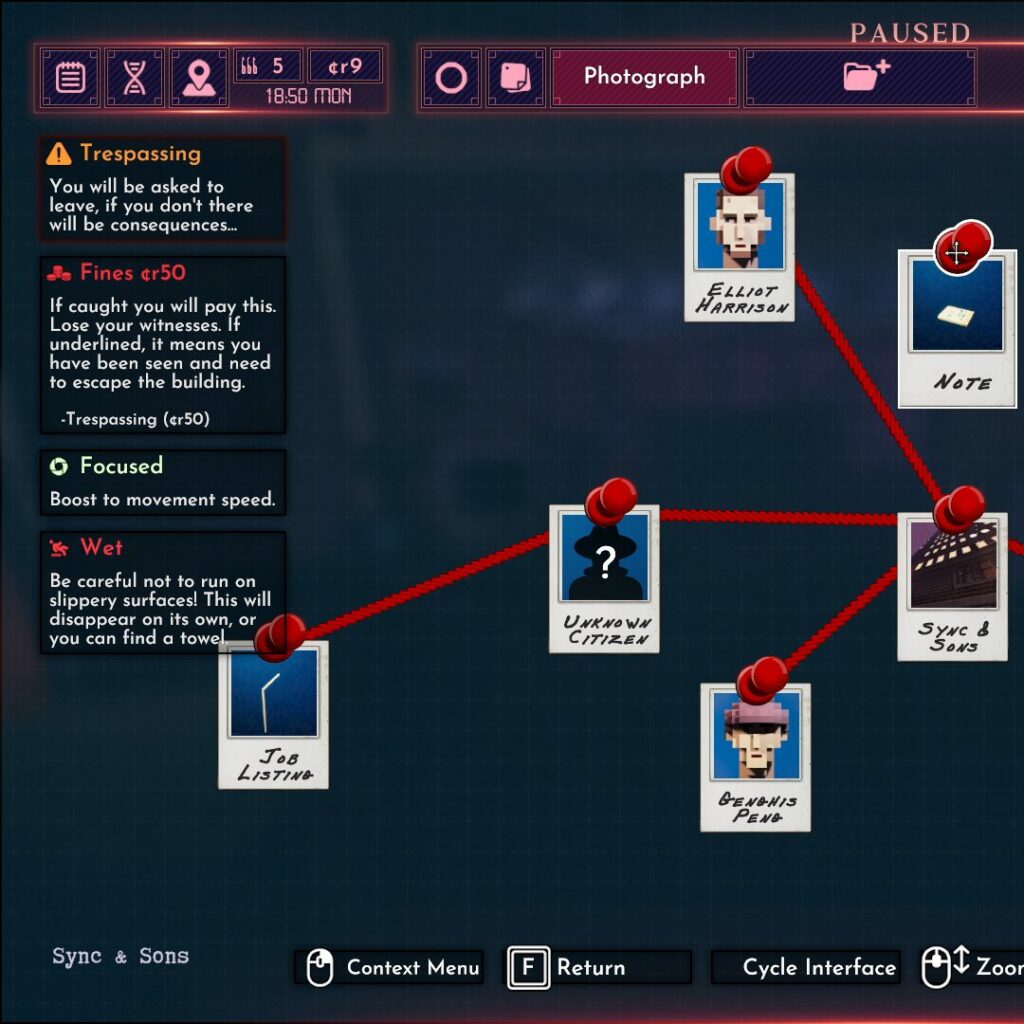
When an investigation forms in Shadows of Doubt (a detective game set in a noir city full of secrets), you spin up a corkboard: suspects, locations, evidence, and red string.
For experimentation, we can pin the symptom, observed behaviour, hypothesis, and proposed intervention.
Draw string only when you can cite a source. No source, no string.
Her Story: L.O.G.I.C. Database Discipline
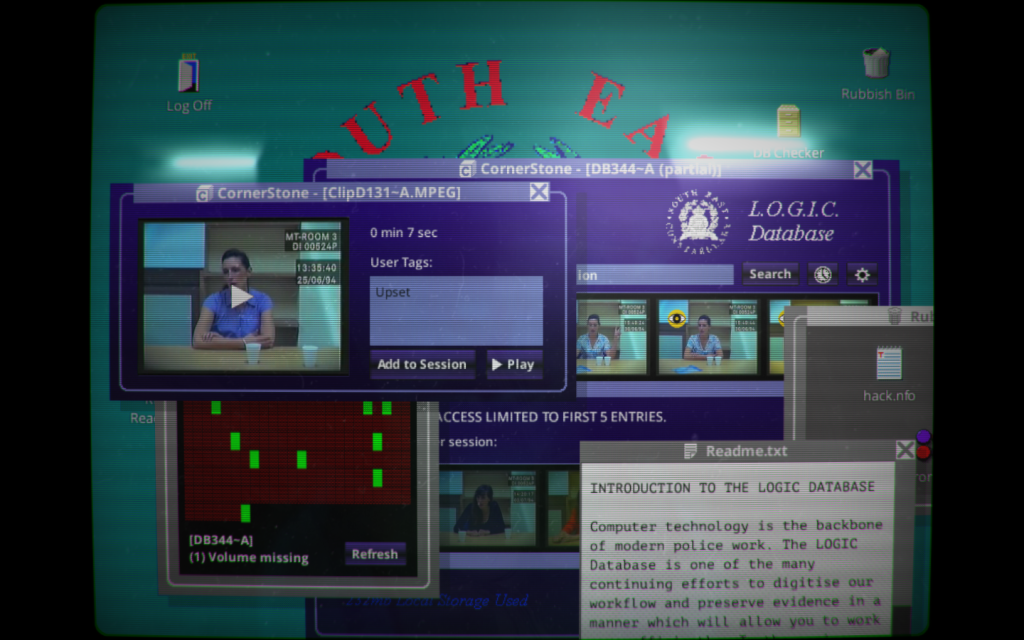
In Her Story you must piece together a story using a police archive of taped interviews, but you don’t get the whole archive; you get a handful of clips per query. That constraint forces purposeful search.
Solution-first testing is like typing random keywords in Her Story: sometimes you get lucky, often you get noise.
Problem-first testing starts by defining a problem, then triangulating it with evidence. Only when you understand the “why” do you design a change that could plausibly move the metric.
This narrows the search space to solutions with a legitimate path to impact, which is why win rates climb.
How We’ve Been Using This Approach at CCX
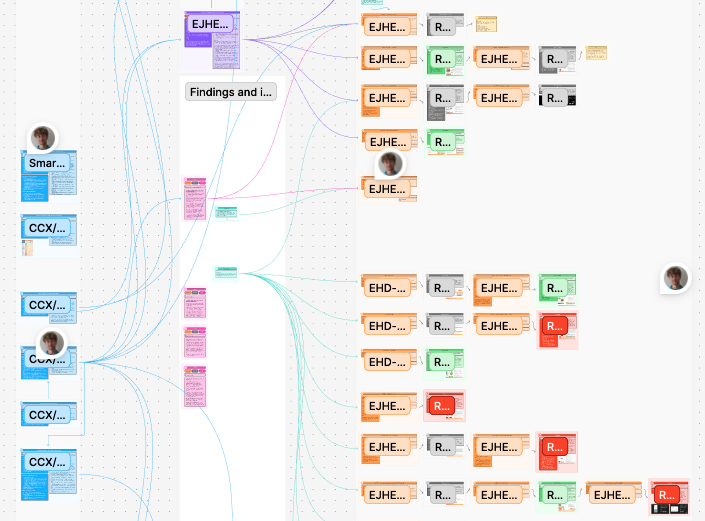
At Creative CX, we’re experimenting with this problem-first mapping approach on some client projects as a proof of concept.
Research inputs flow into a living evidence map (like Outer Wilds’ Ship Log), potential solutions or test ideas are elevated (Shadows of Doubt), and purposeful search keeps every link traceable (Her Story).
We integrate this with client tools such as Airtable, Notion, and Jira, so it enhances existing processes.
Alongside generating stronger hypotheses, it’s proving especially useful for stakeholder presentations, prioritisation, and building confidence in the testing roadmap.
The Benefits of a Knowledge-Driven Approach
When you treat experimentation like a knowledgevania game, the benefits compound:
- Higher win rates, because solutions are rooted in validated problems.
- Organisational memory, like a ship log, prevents re-learning the same lessons.
- Stakeholder alignment, since problems and evidence are mapped clearly before solutions.
- A sustainable culture of learning, where progress is cumulative, not random.
Why This Approach Is Different
Most ideas around UX mapping, metaphor, and gamification are static, abstract, or aspirational.
This approach goes further: a living map that updates with evidence (Outer Wilds), practical templates for problem-solving (Shadows of Doubt, Her Story), and mechanics that enforce a process where progress is gated by understanding, not opinion.
Conclusion: Experimentation as Detective Work
Great experimentation isn’t about guessing the right design tweak. It’s about building a map of understanding, just like in the best deduction games.
Every research activity adds a new clue. Every test validates or disproves a theory. Progress comes not from luck, but from carefully connected knowledge.
The next time you plan an experiment, ask yourself: are we using a slot machine, or are we solving a mystery?
By choosing a problem-first, evidence-driven path, you set your team up for more wins, and more meaningful learning.
If you’d like to explore how a problem-first approach could work for your own experimentation programme, book a free discovery call to find out more.
